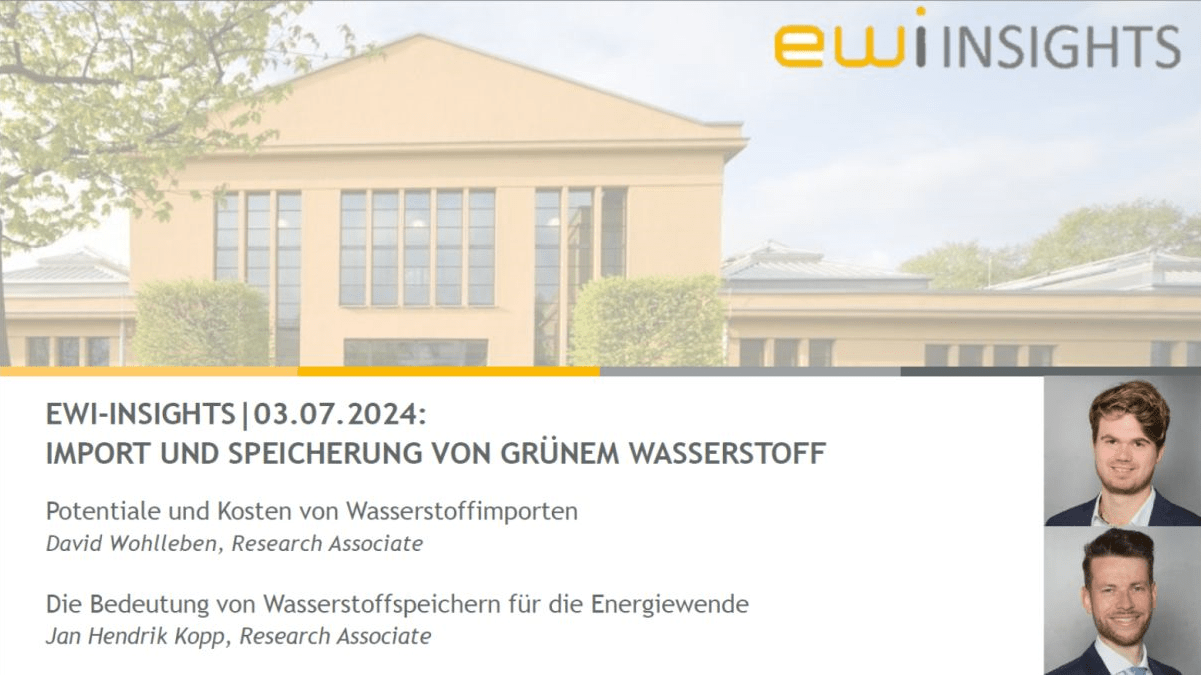
Two researchers from the Institute of Energy Economics at the University of Cologne (EWI) presented current analyses on the ramp-up of the hydrogen economy as part of the “EWI-Insights” webinar series. Tobias Sprenger, Head of Research Area at EWI, moderated the event.
David Wohlleben started by presenting results from the updated “EWI Global PtX Cost Tool”. The tool is freely available for download on the EWI website (Link). It enables the analysis of hydrogen production costs and production potentials of 117 countries of origin as well as the costs for transportation to 19 destination countries.
An analysis with the EWI Global PtX Cost Tool reveals that, besides the renewable energy potential with high full-load hours, access to favorable project financing is crucial for producing green hydrogen and its derivatives. Additionally, fluctuations in wind and solar power generation impact the timing and cost of green hydrogen production. The updated tool now also allows for the examination of how the volatility of renewable energy sources affects both production and transportation costs.
The updated tool enables the analysis of import costs for two distinct supply profiles. In the case of volatile supply, deliveries occur when production is feasible in the country of origin, i.e., when the wind is blowing, or the sun is shining. The resulting delivery profile is displayed in the tool with monthly resolution. For a baseload delivery profile, volatile production is balanced by a storage facility in the country of origin, resulting in more consistent but higher-cost deliveries.
In the second part of the event, Jan Hendrik Kopp spoke about the results of the study “The importance of hydrogen storage”, which was also published this year. The study is freely available (Link) and analyzes the needs, potential, and costs of hydrogen storage. An evaluation of energy system scenarios shows a hydrogen storage demand of up to 3 TWh for Germany by 2030. In 2045, demands can potentially exceed 100 TWh. Overall, the studies identify a wide range of future hydrogen storage demands.
However, the repurposing of salt caverns currently used for natural gas storage would yield a storage potential of only around 30 TWh. Consequently, the construction of new salt caverns may become necessary. An analysis of investment and operating costs, under various assumptions, indicates that storage costs could range from €0.66/kg to €1.75/kg of hydrogen stored. With low utilization, storage costs could rise to €3.50/kg, whereas with frequent use, they could decrease to €0.45/kg.
The online workshop series “EWI Insights” has been held approximately four times a year since 2020. It is aimed at professionals from business, academia, and politics who are interested in scientific findings in the energy sector. Researchers from EWI provide insights into the institute’s latest publications.